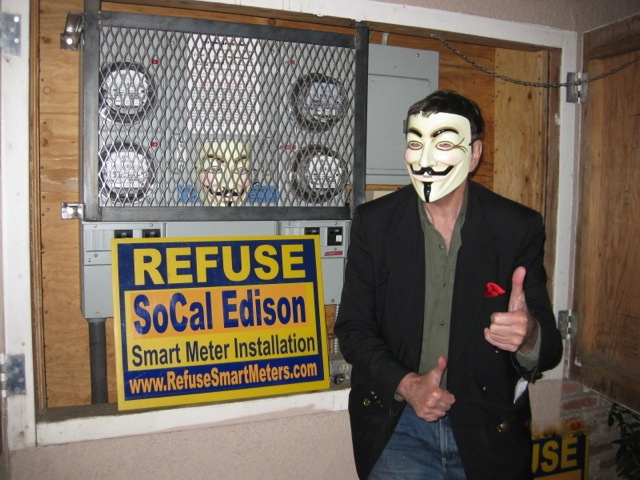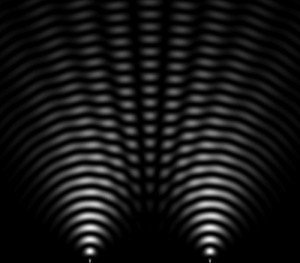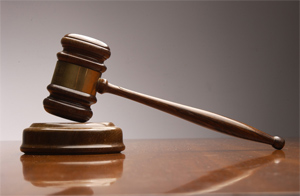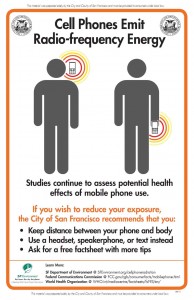In April of 2010 the EMF Safety Network filed an application with the California Public Utilities Commission (CPUC) asking for hearings on health impacts, including “Smart” Meter radio frequency (RF) emissions data. We wrote:
 “PG&E’s paltry, inconsistent and contradictory information on RF emissions from Smart Meters is unbelievable and at odds with other RF expert findings. Several PG&E bulletins and spokespersons make varying claims on how often the Smart Meter electric meters transmit RF, anywhere from every hour to every 4 to 6 hours to 2% or 4% of the time.
“PG&E’s paltry, inconsistent and contradictory information on RF emissions from Smart Meters is unbelievable and at odds with other RF expert findings. Several PG&E bulletins and spokespersons make varying claims on how often the Smart Meter electric meters transmit RF, anywhere from every hour to every 4 to 6 hours to 2% or 4% of the time.
We just wanted the facts, but the CPUC rubber stamped PG&E’s claims of RF safety and dismissed our application stating:
” All radio devices in PG&E’s Smart Meters are licensed or certified by the FCC and comply with all FCC requirements.”
“Smart Meters produce RF emissions far below the levels of many commonly used devices.”
PG&E provides information from Richard Tell Associates on their website titled, “Supplemental Report on An Analysis of Radiofrequency Fields Associated with Operation of the PG&E SmartMeter Program Upgrade System” This report states Smart Meters transmit at 1 watt with 0 antennae gain. It claims:
The 1 watt transmitter is configured to transmit data approximately once every four hours back to the company so its duty cycle is very small (the actual data transmission duration during any four hour period will vary, however, depending on how often a particular meter transmitter acts as a repeater for other nearby meters).
From PG&E’s Smart Meter FAQ: SmartMeters™ utilize a low power (1 watt) wireless radio to send customer energy-usage information wirelessly to PG&E for data collection.….Do electric SmartMeters™ constantly emit RF? PG&E answers:
No. SmartMeters™ communicate intermittently, with each RF-signal typically lasting from 2 to 20 milliseconds. These intermittent signals total, on average, 45 seconds per day. For the other 23 hours and 59 minutes of the day, the meter is not transmitting any RF.
In a letter to Congresswoman Lynn Woolsey, the FCC writes, “the devices [Smart Meters] normally transmit for less than one second a few times a day and consumers are normally tens of feet or more from the meter face…”
All right, enough with the false claims! Just give us some real facts! Recently CPUC administrative law judge Amy Yip-Kikugawa ordered all investor owned utilities (IOU’s ) to answer Smart Meter radio frequency (RF) questions. PG&E’s answers are an astounding confession! Question 2: How many times in total (average and maximum) is a smart meter scheduled to transmit during a 24-hour period?
 PG&E says the average number of RF pulses for the electric meter would be about 10,000, per meter, per day and the maximum number over 190,000.
PG&E says the average number of RF pulses for the electric meter would be about 10,000, per meter, per day and the maximum number over 190,000.
90% of these pulses are for the mesh network maintenance (signals bouncing from homes) and only 6 pulses are for reading the meter data. This doesn’t include Home Area Network transmissions.
How about peak power figures? The PG&E electric meter transmits at 900MHz with 1 watt of transmit power. It has an antennae gain 4.0 dBi for a peak level power of 2.5 watts. That’s two and a half times more than their safety data stated.
The wireless gas meters transmit between 4 and 5 times a day at 132-794 mW.
Answers provided by San Diego Gas and Electric and So Cal Gas were similar, although PG&E electric meters appear to be five times stronger, just like Sage Associates found in their study.
 RefuseSmartMeters posted the following message and photo:
RefuseSmartMeters posted the following message and photo:




